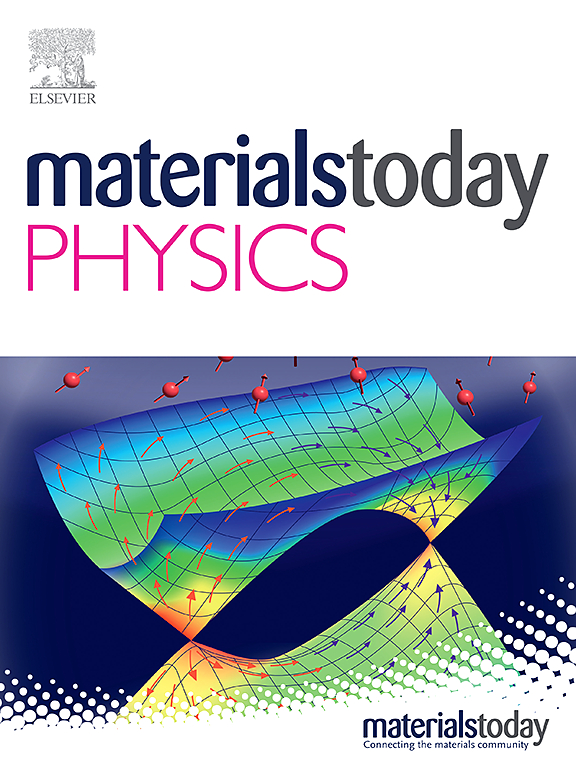Development of a two-mode hydrogel sensor with a thermal diffusion effect for intelligent sensing and temperature warning
IF 10
2区 材料科学
Q1 MATERIALS SCIENCE, MULTIDISCIPLINARY
引用次数: 0
Abstract
With the rapid development of flexible sensor technology, dual-responsive polymer hydrogel sensors have attracted considerable attention owing to their high sensitivity and multifunctional capabilities. However, conventional poly(N-isopropylacrylamide) (PNIPAM) hydrogels, while demonstrating excellent thermal responsiveness, are limited by inadequate mechanical strength, poor conductivity, and restricted functionality, making the development of high-performance multifunctional PNIPAM hydrogels a significant challenge. In this study, a smart dual-response hydrogel based on PNIPAM is proposed, incorporating methyl methacrylate (MMA) and sodium chloride (NaCl), which, when combined with hydroxypropyl methylcellulose (HPMC), forms a double-network structure, thereby achieving synergistic optimization of the mechanical properties and temperature response. The hydrogel precisely tunes its lower critical solution temperature (LCST) to 80 °C through the hydrophobic groups of MMA while significantly enhancing conductivity via Na+/Cl− ionic shielding effects. Additionally, it provides exceptional mechanical properties, including a stretching strain of 1077 % and a compressive strength of 128.6 kPa. Moreover, it has excellent strain sensing sensitivity over a wide threshold range of 1–400 % (GF = 6.6). Importantly, the incorporation of 1-ethyl-3-methylimidazolium tetrafluoroborate ([EMIM]BF4) substantially enhanced the thermoelectric properties, inducing a distinctive P-to-N-type transition in the Seebeck coefficient across the phase change (from +2.37 mV K−1 to −6.84 mV K−1). Herein, successful object shape recognition and graded temperature warning functions were achieved by integrating a deep learning algorithm (with an accuracy of 99.40 %) with a manipulator system. The experimental results demonstrate that the hydrogel shows great potential for human motion monitoring, high-temperature human-machine interactions, and smart robotics, offering new ideas for multifunctional e-skin design.

用于智能传感和温度预警的热扩散双模水凝胶传感器的研制
随着柔性传感器技术的飞速发展,双响应型聚合物水凝胶传感器因其高灵敏度和多功能性而备受关注。然而,传统的聚n -异丙基丙烯酰胺(PNIPAM)水凝胶虽然表现出优异的热响应性,但受到机械强度不足、导电性差和功能限制的限制,这使得高性能多功能PNIPAM水凝胶的开发成为一个重大挑战。本研究提出了一种基于PNIPAM的智能双响应水凝胶,加入甲基丙烯酸甲酯(MMA)和氯化钠(NaCl),与羟丙基甲基纤维素(HPMC)结合形成双网络结构,从而实现力学性能和温度响应的协同优化。该水凝胶通过MMA的疏水基精确调节其低临界溶液温度(LCST)至80°C,同时通过Na+/Cl-离子屏蔽效应显著提高电导率。此外,它还具有优异的机械性能,包括1077%的拉伸应变和128.6 kPa的抗压强度。此外,它在1-400%的宽阈值范围内具有优异的应变传感灵敏度(GF = 6.6)。重要的是,1-乙基-3-甲基咪唑四氟硼酸盐([EMIM]BF4)的掺入大大增强了热电性能,诱导塞贝克系数在相变过程中从p到n型转变(从+2.37 mV K-1到-6.84 mV K-1)。其中,通过将深度学习算法与机械臂系统相结合,实现了物体形状识别和温度梯度预警功能(准确率达99.40%)。实验结果表明,水凝胶在人体运动监测、高温人机交互、智能机器人等方面具有很大的潜力,为多功能电子皮肤设计提供了新的思路。
本文章由计算机程序翻译,如有差异,请以英文原文为准。
求助全文
约1分钟内获得全文
求助全文
来源期刊

Materials Today Physics
Materials Science-General Materials Science
CiteScore
14.00
自引率
7.80%
发文量
284
审稿时长
15 days
期刊介绍:
Materials Today Physics is a multi-disciplinary journal focused on the physics of materials, encompassing both the physical properties and materials synthesis. Operating at the interface of physics and materials science, this journal covers one of the largest and most dynamic fields within physical science. The forefront research in materials physics is driving advancements in new materials, uncovering new physics, and fostering novel applications at an unprecedented pace.
 求助内容:
求助内容: 应助结果提醒方式:
应助结果提醒方式:


